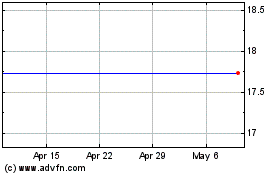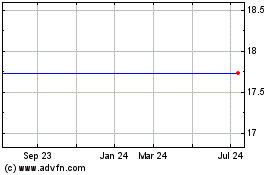By Josh Mitchell and Joshua Zumbrun
The U.S. and world economies look increasingly likely to slip
into recession as expanding swaths of commerce shut down and the
Dow Jones Industrial Average suffered its worst day since 1987 amid
the coronavirus pandemic.
The global financial rout deepened on Thursday despite new
measures by major central banks to ease market strains and bolster
the economy -- and as the Trump administration and Congress neared
agreement on legislation to provide federal financial assistance to
many affected businesses and workers.
The Dow Industrials fell nearly 10%, while the S&P 500 and
Nasdaq joined it in bear-market territory. For the day, the Dow
industrials shed 2,352.6 points to 21,200.62. The S&P 500 sank
260.74 points, or 9.5%, to 2,480.64. And the Nasdaq Composite slid
750.25 points, or 9.4% to 7,201.80.
Airline and cruise company shares led the collapse. United
Airlines Holdings was down 25%, Delta Air Lines dropped 21%, and
Spirit Airlines tumbled 33%. Royal Caribbean Cruises plummeted
32%
European stocks suffered one of their worst days in decades,
with the Stoxx Europe 600 index dropping 11.5% by day's end. This
came after the European Central Bank said it would issue cheap
loans to banks and buy more eurozone debt to mitigate the economic
shock of the coronavirus -- but didn't cut its key interest rate,
which is already below zero.
U.S. stocks initially pared their losses, but later resumed
their fall after the U.S. Federal Reserve said it would inject more
than $1.5 trillion into short-term funding markets on Thursday and
Friday to prevent ominous trading conditions from creating a
sharper economic contraction.
Meantime across the U.S. -- the world's largest economy --
authorities this week have canceled or postponed a swelling number
of commercial flights, industry conferences, music festivals,
sports events and other public activities, while oil producers are
being slammed by a sharp drop in crude prices. All this raises the
odds the record-long economic expansion will end in coming months,
economists said.
"We are going into a global recession. The necessary measures to
contain the spread of the virus make that unavoidable," said Vítor
Constâncio, a former vice president of the European Central Bank,
on Twitter Thursday.
In the U.S. alone, "the chances of a recession are going way
up," said Michael Feroli, an economist at JPMorgan Chase.
President Trump's announcement Wednesday night of a 30-day ban
on some travel to the U.S. from Europe to contain the spread of
virus came as global air traffic was already falling and all of
Italy and parts of many other countries were under quarantine.
While cancellations and postponements of public activities in
the U.S. -- such as major league baseball, hockey and basketball
games, Broadway shows and Austin's South by Southwest festival --
may help slow the spread of the virus, it will inevitably take a
toll on consumer spending, economists said.
"It's going to be massively disruptive to the economy," said
Joshua Shapiro of consulting firm MFR Inc.
"You go to a sporting event, not only do you buy a ticket. You
buy some beers, maybe you go to dinner first. You go out
afterwards. You're spending money," Mr. Shapiro said. "It's not
just the ticket to the event, it's the plane ticket, it's the
hotel. It's all these people working at these places."
As U.S. benchmark crude crashed to near $30 a barrel this week,
shale firms announced a string of drilling and spending cuts that
will squeeze hundreds of energy service firms that employ the bulk
of the industry's workforce.
On Thursday, longtime shale driller Apache Corp. said it would
drop all of its rigs in the Permian basin of Texas and New Mexico,
shift resources overseas and slash its quarterly dividend by 90%.
Matador Resources Co. plans to cut half of its drilling rigs by the
end of June, while executives and board members take pay cuts.
Marathon Oil Corp. plans to slash at least $500 million in
spending, halt all drilling and fracking in Oklahoma and reduce
activity in the Permian, where it has four rigs and one fracking
crew.
Whenever a company stops drilling or cuts spending, the contract
crews that operate drilling rigs and other oil-pumping machinery
typically try to find other jobs in the oil patch. If enough
producers throttle down all at once, and drilling rigs are idled
for an extended period, energy service firms will have to cut
workers and prices, and over time, growing U.S. oil production
would flatten and fall.
Those service companies employ thousands in oil and gas hot
spots like Houston, Oklahoma City and Midland, Texas.
JPMorgan Chase said Thursday it now thinks the economy will fall
into recession in the first half of this year, ending the
record-long expansion that began in 2009. It expects output to fall
by an annual rate of 2% in the first quarter and by another 3% in
the second quarter. JPMorgan expects the economy to return to solid
growth in the second half, assuming a "fiscal response" of $500
billion from Congress. As a general rule of thumb, many economists
view a recession as two consecutive quarters of economic
contraction.
The Institute of International Finance predicts the global
economy will grow about 1% this year, the smallest gain since the
global financial crisis in 2009 and a level that would likely mean
many countries would fall into recession.
A recession can take months to show up in economic data. Most
likely, it would first become visible in sentiment readings, new
claims for unemployment insurance benefits, and eventually in
spending and investment data.
Through last week, U.S. employers generally appeared to resist
the urge to lay off workers. New jobless claims fell last week, to
a historically low level of 211,000, the Labor Department said
Thursday.
But IHS Markit said last week business activity in the U.S.
service sector -- representing industries from restaurants to
health-care providers -- fell in February for the first time since
2013.
ECB President Christine Lagarde on Thursday echoed other central
bankers who have recently said there are limits to how much
monetary policy can do in the current crisis and called on other
policy makers to use fiscal policy, such as tax and government
spending measures, to provide support.
"An ambitious and coordinated fiscal stance is now needed in
view of the weakened outlook and to safeguard against the further
materialization of downside risks," she said.
The Fed's action Thursday came amid increasing strains in
financial-market plumbing, putting pressure on the central bank to
intervene in a way not seen since the 2008 financial crisis.
"These changes are being made to address highly unusual
disruptions in Treasury financing markets associated with the
coronavirus outbreak," the New York Fed said in a statement.
Investors have pulled an average of nearly $2 billion dollars a
day from emerging markets over the past six weeks, according to the
Institute of International Finance, a development that could lead
to countries running down their foreign reserves and eventually
encountering problems managing their debts.
The International Monetary Fund, the Washington-based
institution that serves as the global lender of last resort, said
in a briefing Thursday that it has begun to field inquiries from
countries that may need financial assistance.
Earlier on Thursday, Iran, one of the countries hardest hit by
the coronavirus, said that it had requested a $5 billion rescue
program from the IMF.
"We are in very active consultation with our member countries,"
said Gerry Rice, an IMF spokesman, at a briefing on Thursday. "We
are receiving inquiries and requests from a number of countries
including Iran. I can tell you we are proceeding expeditiously with
all requests."
The IMF said last week that it had $50 billion that could be
disbursed rapidly for coronavirus relief programs. The IMF has
total lending resources of up to $1 trillion that countries could
seek to tap to combat the slowdown in global financial flows.
David Harrison, Nick Timiraos, Tom Fairless, and Harriet Torry
contributed to this article.
Write to Josh Mitchell at joshua.mitchell@wsj.com
(END) Dow Jones Newswires
March 12, 2020 18:14 ET (22:14 GMT)
Copyright (c) 2020 Dow Jones & Company, Inc.
Apache (NYSE:APA)
Historical Stock Chart
From Mar 2024 to Apr 2024

Apache (NYSE:APA)
Historical Stock Chart
From Apr 2023 to Apr 2024
